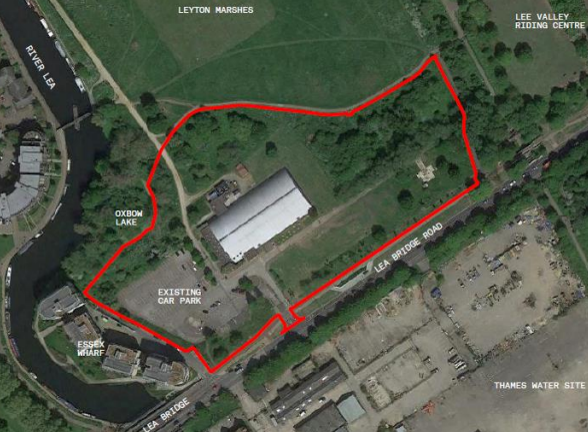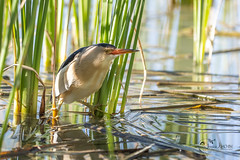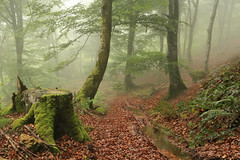This week’s featured objection to the Lee Valley Ice Centre being situated at Leyton Marsh is focused upon the superior benefits of enhancing rather than reducing green space at this location. It is written by Caroline.
To: dmconsultations@walthamforest.gov.uk
I wish to object to the planning application 194162 to build ‘Two x 30m x 60m Olympic-sized ice pads with 500 seating capacity and additional 300 spectator standing, cafe space, 100 station fitness centre, ice garage and plant room’ on Lea Bridge Road.
My objection centres on the fact that the proposal constitutes inappropriate development on Metropolitan Open Land (MOL) and the applicant has not made out the case for ‘very special circumstances’ that outweighs the harm to MOL.
The LVRPA have not made the argument that there are ‘very special circumstances’ regarding location, transport, physical characteristics or policy that merit the development planned.
The applicant has stated that the Lea Bridge Road site benefits from its ‘strategic appeal & profile/ visual prominence on Lea Bridge Road’. If the Ice Centre were re-located then Leyton Marsh and Walthamstow Marshes would be more visually prominent which would both welcome people onto the marshes, increase connectivity of the marshes east and west of Lea Bridge Road and be more aesthetically pleasing. A re-location of the ice centre to another site such as Eton Manor would provide the opportunity for the footprint of the current LVIC to be re-wilded. This would be a greater strategic asset for the Lee Valley Park, re-linking the marshes together creating a continuity of landscape, to the benefit of people and wildlife. The benefits of viewing green space and trees has been shown to assist health and well-being, the same case has not been made for viewing large building structures. One of the primary features of the Regional Park must be to protect and enhance open parkland and one of the key reasons Metropolitan Open Land has such a designation is the recognised feature of ‘openness’. This development will degrade rather than enhance such openness.
The LVRPA argue that its choice of Ice Centre location ‘benefits from proximity to existing and planned communities’ however these existing and planned communities can benefit most from opening up the landscape and providing greater accessibility and visibility for the free activity of walking for leisure to more people in the community. Walking in green space is a leisure activity that reaps significant benefits and Leyton Marsh is a popular location for the community to walk for leisure. This is particularly important to residents in the immediate community, such as those adjacent to the site at Essex Wharf and those living in the new high-rise buildings on Lea Bridge Road, who do not have gardens. Research by the charity Mind finds that ‘71 per cent report depression decrease after green walk, 22 per cent report depression increase after urban walk’ https://www.mind.org.uk/news-campaigns/news/go-green-to-beat-the-blues/ therefore it is important that in areas of high population density, green open space is available for such an activity. The development of a large and prominent structure will urbanise and thus degrade the available green open space for the community and for the purpose of walking for leisure.
During times when we are experiencing increasing rates of mental illness as a society, enhancing the provision, visibility and accessibility of green space available for walking for leisure outweighs the LVRPA’s argument for paid leisure activities; research shows that it is the former which is patently more beneficial for both mental and physical health of a greater number of the population than elite sporting venues for athletes and spectators.
Consideration should be made of the research findings comparing the outcomes of indoor leisure activity in a building with outdoor activity; these findings clearly indicate the benefits of green exercise outweigh those of indoor leisure activity in terms of improving mental health. Mind’s research study (referenced above) details the views of people who regularly partook in green activities run by Mind’s network of local Mind associations: ‘90 per cent said it was the combination of nature and exercise that had the greatest effect on them’ and ‘94 per cent said that green activities had benefited their mental health, lifting depression.’
The ninety percent figure is very revealing, it’s not just the activity of exercise but exercise in a natural environment that is so beneficial to people’s health and well-being. The LVRPA have not proven that the provision of enhanced elite facilities for ice-skating, other pay-to-use leisure activities such as a gym and associated infrastructure such as the 200+ space car park constitute the ‘very special circumstances’ which outweigh the necessity to provide enhanced opportunities for walking in green space for residents in nearby and increasingly high-density residential communities.
Mind’s report ‘Ecotherapy: the green agenda for mental health’ presents the findings of the first ever study looking at how green exercise specifically affects people with mental health problems. A walk in a country park was compared with a walk in an indoor shopping centre. The results are startling:
- 71 per cent reported decreased levels of depression after the green walk
- 22 per cent felt their depression increased after walking through an indoor shopping centre and only 45 per cent experienced a decrease in depression
- 71 per cent said they felt less tense after the green walk
- 50 per cent said their feelings of tension had increased after the shopping centre walk
- 90 per cent had increased self-esteem after the country walk
- 44 per cent said their self-esteem decreased after window shopping in the shopping centre.
Whilst the applicant is not seeking permission to construct an indoor shopping centre, it is nonetheless seeking to replace green space on Metropolitan Open Land with indoor leisure activities for customers only. This will provide a lesser benefit to a smaller number of people than if it sought to extend the opportunities for ‘eco-therapy’ to the larger regional population who enjoy the marshes as part of a Regional Park. A forward-looking Authority would both assess and explore the potential for eco-therapy on Leyton and Walthamstow Marshes: Mind is unequivocal about the potential benefits of rolling out eco-therapy in appropriate places, “Hundreds of people have benefited from the green projects run by our local Mind associations but if prescribing ecotherapy was part of mainstream practice it could potentially help the millions of people across the country who are affected by mental distress.”
The Heritage and Society Report of 2019 recognises the significance of protecting natural heritage. https://historicengland.org.uk/content/heritage-counts/pub/2019/heritage-and-society-2019/
Parks and green spaces are a key component of social infrastructure; ‘the physical places and organisations that shape the way people interact’ (Klinenberg, 2018, p.5). A recent evidence review commissioned by National Lottery Heritage Fund and the National Lottery Community Fund, conducted by Sheffield Hallam University and The University of Sheffield includes a peer review of 385 studies. It highlights the social benefits of parks and green spaces (predominantly in the UK, Europe, the US and Australia) and underlines the potential of parks to deliver ‘multiple health benefits for the local communities and support long term mental and physical health’ (Dobson et al, 2019). Facilitated visits to green spaces improved the self-esteem, mental well-being and social lives of people with disabilities (Jakubec et al., 2016). Improving accessibility to Leyton Marsh from Lea Bridge Road could more positively impact those with disabilities than providing an accessible leisure venue.
Crucially, parks and green spaces enable people to connect with nature, which in turn benefits wellbeing. Recent surveys reflect the earlier findings of the Mind reports; a ‘sense of connectedness to nature is linked with greater psychological well-being’ (Cervinka et al., 2011; Howell et al., 2011)
Studies show that children and young people appreciate being asked to have their say on park design and use (Derr and Tarantini, 2016; Malone, 2012; Gallerani et al., 2017). There is no evidence that the LVRPA conducted a wide consultation with the community about the role and design of Porter’s Field Meadow (Leyton Marsh); its consultation was skewed towards those who use the present site for paid-for leisure activity, i.e. ice-skating.
Multiple reviews suggest that physical health, wellbeing and life satisfaction are enhanced through access to and use of parks and green spaces. Studies on obesity levels among children showed ‘levels are lower when there is more nearby green space to their residence’ (Dadvand et al., 2014). Proximity to green spaces is associated with reduced anxiety and mood disorder (Nutsford, Pearson and Kingham, 2013).
The Heritage & Society report of 2019 also finds that the main source of pride for adults is ‘countryside and scenery’ at 53% (more than any other category). This finding reflects the importance of conserving and preserving open landscape and scenery; properly assessing the impact of natural heritage on residents and the wider community in order to best locate leisure venues within the Regional Park.
The applicants have over-estimated the role and impact of paid-for indoor leisure activity and underestimated the value of natural heritage in their assessment of the LVIC site and have therefore not proven very special circumstances in terms of location.
Leyton and Walthamstow Marshes provide a place where thousands of people find peace, solace and well-being, even helping individuals to overcome addiction. This is referenced in this recent and extremely popular article in The Guardian which goes into detail about the therapeutic effect of Nature, specifically including Walthamstow Marshes SSSI (adjacent to Porter’s Field Meadow/ Leyton Marsh, the proposed development site): https://www.theguardian.com/lifeandstyle/2020/feb/25/ecological-grief-i-mourn-the-loss-of-nature-it-saved-me-from-addiction
“So I started walking, wandering daily on Walthamstow Marshes in north-east London to watch the kestrels, caterpillars and the shaggy old heron. It made me feel safe and secure. Gradually, I realised that my mind needed these walks and I grew to rely on them. The natural world had become a kind of rehab: it soothed my rawness and patched me back together.” The author Lucy Jones goes on to state, “I hadn’t realised that the essence of nature – the geometry, the scents, the sounds, the colours, the textures, the chemical makeup – could have such a life-changing power but, quite quickly, this became apparent.” Whilst the benefits of being in open green space are by nature difficult to capture, the report findings combine with individual testimony to create a compelling case that ‘very special circumstances’ exist for preserving rather than developing MOL for very large leisure facilities at this location.
Instead of a large-scale building project, the LVRPA should be increasing climate resilience with natural infrastructure such as SINCS, re-wilded areas, flood plains and extended buffers for special protection sites such as Walthamstow Marshes SSSI.
The vital role of green space for walking within Nature demonstrates that there is not a ‘very special circumstance’ for reducing green space for a built structure, quite the opposite, and this is also re-enforced by policy guidance. The site of the proposed ice centre is MOL and it is settled law that MOL has the same protections in law as Green Belt. Section 143 of The National Planning Policy Framework (2019) states that ‘inappropriate development is, by definition, harmful to Green Belt and should not be approved except in very special circumstances.’ Local authorities are directed, at Section 145 of the NPPF, to regard the construction of new buildings as inappropriate in Green Belt except in a number of exceptional circumstances.
The proposed development does not meet the requirements of any one of the exceptions and is, therefore, inappropriate development on Green Belt. In order to persuade the planning authority to grant planning permission, the applicant must, therefore, prove that ‘very special circumstances’ exist. It does not do so and the proposed development is consequently contrary to the NPPF, as well as Policy 7.17 of the London Plan, Policies G2, G3 and G4 of the Draft London Plan, Policy CS5 of the Waltham Forest Local Plan and Policy 84 of the Draft Waltham Forest Local Plan.
Transport
The applicant states that the ‘desired footprint can be comfortably provided on the existing site, has room for 200 parking spaces (plus potential ability to also use the immediate surrounding area for parking if necessary)’. Firstly, the footprint can only be ‘comfortably provided’ by extending further onto protected land. Secondly, encouraging cars on to the edge of Leyton Marsh has an effect of urbanising this green space further, especially as the applicant is referencing its future ability to extend car-parking on site. It runs counter to current policy focused on increasing sustainable transport and reducing carbon emissions, as well as running counter to the measures aimed at reducing air pollution. For this reason, many developments, even though not being constructed on MOL, are designed to be car-free or at the very least to minimise car-parking spaces, in order to actively encourage sustainable transport modes by visitors.
The choice of the Lea Bridge Road site may offer a large enough desired area for an expandable car park of 200+ spaces on MOL, however it is not best situated as regards cars accessing the site. The Lea Bridge Road is a single lane carriageway which is currently heavily congested at peak times.
Air pollution
Air pollution levels will increase as a result of the new development being designed to attract a large number of visitors using cars. The document 6D2 acknowledges that ‘the scheme exceeds the transport emissions benchmark.’
There are significant limitations to the off-setting proposed to counteract the effect of transport emissions from the proposed development. Some of those suggested are clearly beyond the remit and ability of the LVRPA, including: Support and promotion of car clubs; contributions to low emission vehicle refuelling infrastructure; provision of incentives for the uptake of low emission vehicles; financial support to low emission public transport options; and improvements to cycling and walking infrastructures.
The document advises that the applicants ‘implement a Travel Plan that supports and encourages sustainable staff travel (public transport, cycling, walking, and car-sharing)’. However, providing a very large car park of 200 spaces, with the provision of more if necessary, encourages unsustainable car use by visitors, rather than sustainable transport modes.
LBWF has declared an AQMA for nitrogen dioxide and PM10 that encompasses the whole Borough. The Council has developed an Air Quality Action Plan for 2018 – 2023 (LBWF, 2018). This sets out to “manage the impact of future growth of the borough, support healthier lifestyles for residents, reduce the impact of traffic on air quality and congestion as well as reducing our own impact on air quality.” By increasing traffic use, particularly car use, on the already congested Lea Bridge Road, the application is incompatible with this policy.
Improvement of cycling and walking infrastructure has taken place with the Mini-Holland scheme, with a new pedestrian path and cycleway being installed outside the current LVIC. However, the encouraging of vehicular traffic across these paths is antithetical to the goals of the scheme, which is to provide a safer and healthier route for cyclists and pedestrians.
There are significant limitations to the data presented for PM10 and PM 2.5 concentrations; pollutants that are acknowledged as hazardous to human health and therefore a precautionary approach should apply. Document 6D2 states, ’There are no nearby PM10 or PM2.5 monitors. It has therefore not been possible to verify the model for PM10 or PM2.5.’ Another limitation of the Air Quality assessment is that ‘there is currently no straightforward way to take account of the effects of the 2017 Plan or 2018 Supplement in the modelling undertaken for this assessment; however, consideration has been given to whether there is currently, or is likely to be in the future, a limit value exceedance in the vicinity of the proposed development.’ As has been stated, this scheme ‘exceeds’ such a benchmark for transport.
The assessment of sustainable transport for alternative sites under consideration was also completed before a main bus route serving the current LVIC, the 48, was withdrawn. The withdrawal of the 48 bus route limits more sustainable transport options for both visitors and staff at the Lea Bridge Road site.
The application should be refused on the basis that it does not comply with the relevant policies.











